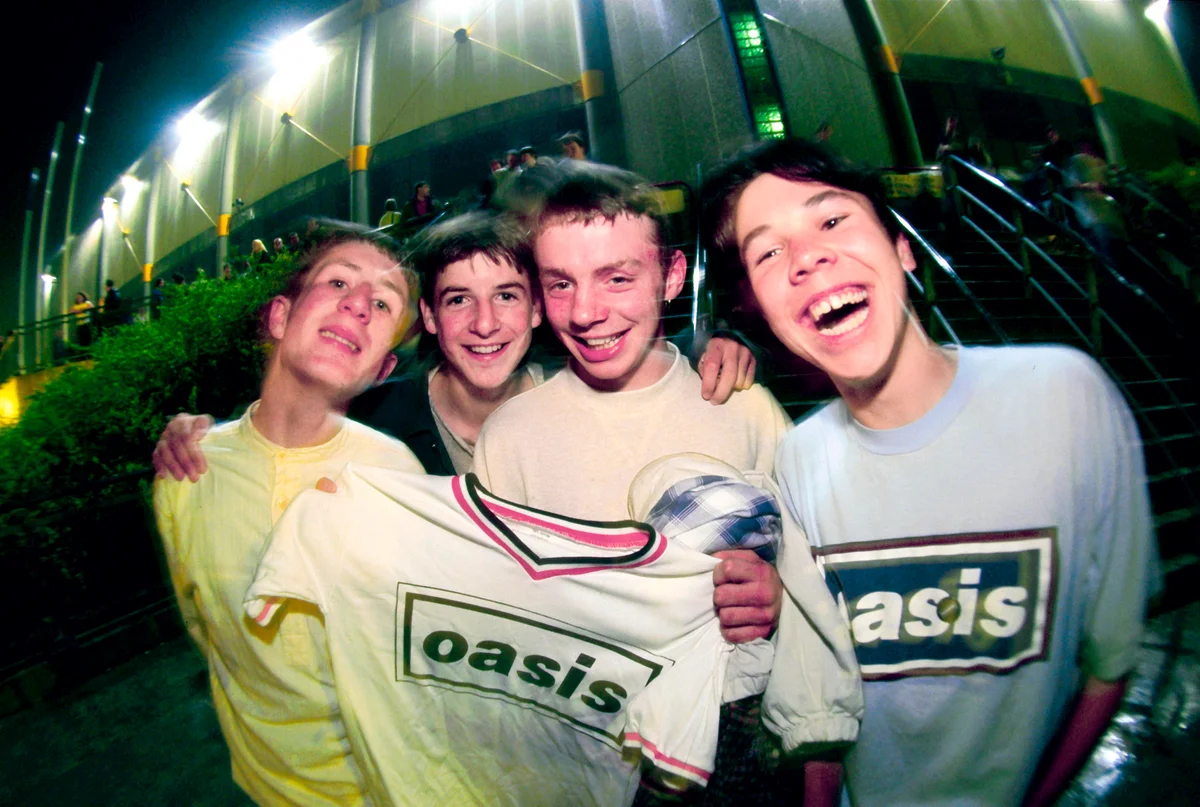By Hamish MacBain
Born in Busan, South Korea just several days after Spotify. (To give an idea of just how enormous an accomplishment this is, Taylor Swift’s “Shake It Off” took almost 10 years to achieve the same milestone.)
Soon after, as part of his promotional tour for “Seven”, Jung Kook stopped off at Radio 1 to perform in the live lounge where, as is customary, he performed his new single along with a cover of his choice. When it was trailed that the latter would be an Oasis song, most people tuning in likely would have presumed it would be one of their heavy hitters: “Don’t Look Back In Anger” or “Wonderwall” or maybe at a push “Stop Crying Your Heart Out”, which Leona Lewis covered in 2009 and turned into an X Factor audition standard (see: a then-unknown Harry Styles). But no. Jung Kook’s song of choice? The 2005 track “Let There Be Love”.
It was, to say the least, an esoteric choice. The long-running, somewhat sniffy, and fairly unanimous critical narrative surrounding Oasis is that the brothers made two good albums in Definitely Maybe and (What’s The Story) Morning Glory? then nothing of value after that. So how on earth was the biggest pop star in the world – not yet born when said albums came out – aware of this relative obscurity?
The answer lies in the success of the Supersonic documentary. After its release in 2016, generation after generation of freshly hooked Oasis fans rushed to Spotify and discovered their post-1996 songs without the context of the times in which they were released. Many who heard, say, “Go Let It Out” upon its release in 2000 did so with people all around them endlessly screeching that Oasis were long finished and that this single – a UK No 1, but still – was evidence of that fact. That it was the lead single from their weakest album, 2000’s Standing On The Shoulder Of Giants, did not help its critical reception. But to fresh ears as part of a playlist, sandwiched between “Morning Glory” and “Slide Away”? It’s just another great Oasis song.
To browse TikTok in the moments after the reunion announcement in 2024 was to see thousands of teenagers ecstatically miming along to Oasis songs most music critics likely never even bothered listening to before typing out their “it’s not a patch on Definitely Maybe” missives. There’s the motorik groove of “The Shock Of The Lightning” and the Liam-written blast of “Ain’t Got Nothin’”. The gorgeous Gallagher duet “Let There Be Love”. “Bonehead’s Bank Holiday” (a vinyl-only bonus track on Morning Glory) is enjoying a particularly joyous second life.
It is this multi-generational reappraisal that has made news of the Oasis reunion that much more exciting. Part of Noel Gallagher’s reasoning for not reuniting with his brother sooner – among many other well-documented reasons – was that everyone who could possibly have wanted to see his band had surely had ample opportunity. Oasis had, after all, spent the 15 years after their imperial period playing stadiums all over the world. Even those who were but toddlers when “Live Forever” came out could have legally bought a drink while watching them play in 2009.
But from 2016 onwards, it became apparent that this was no longer the case, and that there was a whole new generation desperate to experience Oasis. At Liam Gallagher’s first solo show at Manchester Ritz in 2017 – which I attended along with lots of people far younger than me – he closed with the title track from Be Here Now: a song that even Oasis had stopped playing in 1998. That night, it went down as though it was one of their biggest hits. The band, too, never played “Roll It Over” – from the aforementioned, much maligned Standing On The Shoulder Of Giants – yet Liam felt confident enough to give the song its live debut in front of 85,000 people on his return to Knebworth in 2022.
The last time that I saw Noel Gallagher’s High Flying Birds, meanwhile – at Alexandra Palace in July 2024, when he but very few others knew what was coming in a month’s time – he performed Stand By Me B-side “Going Nowhere” and was greeted with the kind of mass singalong normally reserved for enormo-hits. The fact that a good chunk of those voices belonged to teenagers says a lot.
When it comes to the reunion shows, Oasis have, I would say, about 75 minutes’ worth of music that they would not get out of the venues alive without playing. We all know which songs these are. But that still leaves plenty of room for a few deeper cuts, which will go down as well with their newfound Gen Z audience as it will with those who, like me, first got hooked on them in 1994.
Famously, of course, the story of Oasis extends far beyond their greatest hits anyway. A good slice of that 75 minutes are B-sides (“Acquiesce”; “Half The World Away”) and so perhaps it is time that their older, more cynical observers take a leaf out of their younger, less cynical counterparts and delve back into a latter day catalogue that, while undeniably patchy and not at-the-time-era-defining, is stuffed full of gems that are the equal of those bigger songs and worthy of attention.
In fact, it would be brilliant if somebody could co-author a book that, rather than going deep on 1994-1997 and then skipping over the next 12 years like they don’t really matter, celebrates the whole, glorious spectrum of Oasis for both new fans and old.
Oh wait. Somebody has…
‘A Sound So Very Loud: The Inside Story Of Every Song Oasis Recorded’ by Ted Kessler and Hamish MacBain is published by Pan Macmillan on 3 July (£25, hardback – ebook and audiobook also available)
